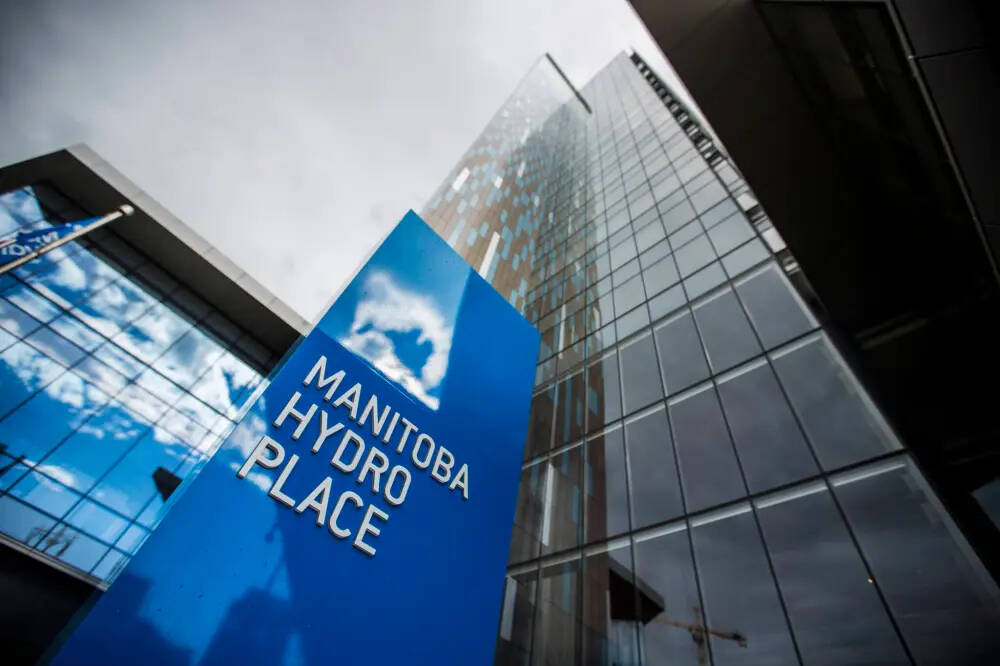Dry year sees Manitoba Hydro post $63M loss
Advertisement
Read this article for free:
or
Already have an account? Log in here »
We need your support!
Local journalism needs your support!
As we navigate through unprecedented times, our journalists are working harder than ever to bring you the latest local updates to keep you safe and informed.
Now, more than ever, we need your support.
Starting at $15.99 plus taxes every four weeks you can access your Brandon Sun online and full access to all content as it appears on our website.
Subscribe Nowor call circulation directly at (204) 727-0527.
Your pledge helps to ensure we provide the news that matters most to your community!
To continue reading, please subscribe:
Add Brandon Sun access to your Winnipeg Free Press subscription for only
$1 for the first 4 weeks*
*$1 will be added to your next bill. After your 4 weeks access is complete your rate will increase by $4.99 a X percent off the regular rate.
Read unlimited articles for free today:
or
Already have an account? Log in here »
WINNIPEG — Two years of continuing drought have left Manitoba Hydro’s finances marooned in the red.
The Crown corporation’s 2024-25 annual report, released Friday, showed a consolidated net loss of $63 million for the fiscal year that ended March 31.
That loss came after the utility sank $157 million into the red the previous year.

Two years of drought means Manitoba has lost $63 million for the fiscal year that ended March 31, atop the $157 million loss it recorded last year. (Mikaela MacKenzie/Winnipeg Free Press files)
And the losses continue; the utility already lost another $61 million in the first three months of this fiscal year, from April to June.
“As with any hydroelectric utility, we are at the mercy of Mother Nature when it comes to precipitation,” CEO Allan Danroth said in a statement released Friday.
“While we remain hopeful, for a return to more normal precipitation levels this autumn and into winter, we are continuing to manage our water and financial resources to ensure the security of the energy system going forward.”
Hydro has now faced drought-caused losses in three of the last four years.
The utility lost $248 million in the 2021-22 fiscal year, but that was followed by a profit of $638 million a year later.
Overall, Hydro has posted a profit of only $109 million since April 2021.
Finance Minister Adrian Sala said unless there’s a change in the weather, the corporation expects to report another loss at the end of the fiscal year in March.
“We still have some more time for us, for a rain season, and I do continue to hope for lots of rain, but at this point we are being transparent with Manitobans about that possibility,” Sala said.
“We had a hot and dry summer. This has impacted water levels across Manitoba Hydro’s basin.”
The government has a $200-million revenue contingency to help offset anticipated losses this year by Hydro, he said.
“We are continuing to ensure Hydro has what they need to keep energy rates low for Manitobans while generating new capacity, including 600 megawatts in Indigenous-owned wind that was announced as part of our affordable energy plan.”
Byron Williams, a lawyer who represents the Consumers Coalition — the Consumers Association of Canada (Manitoba branch), Aboriginal Council of Winnipeg and Harvest Manitoba — at Public Utilities Board electricity-rate hearings, said while it’s not possible to predict future water levels, Manitoba Hydro can do more to improve its bottom line.
Williams noted the utility’s operating expenses went up 7.8 per cent annually between 2021 and 2024, and are expected to go up another six per cent in 2025.
“What are they doing on the cost-control side?” he said.
“We do expect Hydro to have bad years, but while drought is never good news, and low water levels are never good news, prudent management could control expenses. We would expect a vigorous effort to control operating expenses, but also capital expenses to delay and defer where prudent and reasonable.”
Hydro lost $49 million last year in the electric segment and $27 million in the natural gas segment. Those losses were offset by a net income of $13 million from subsidiaries.
The improvement, compared with the prior fiscal year’s losses, was largely because of lower fuel and power purchases costs, and increased domestic and electric natural gas revenues, the release said.
The utility said it also faced higher operating, maintenance, administrative and finance expenses.
“While the financial impacts of the drought weren’t as severe as they were last year, these low-water conditions once again led to less energy being available to sell in wholesale markets,” Danroth said. “They also meant we needed import power to meet customer requirements in Manitoba more than usual.”
» Winnipeg Free Press
